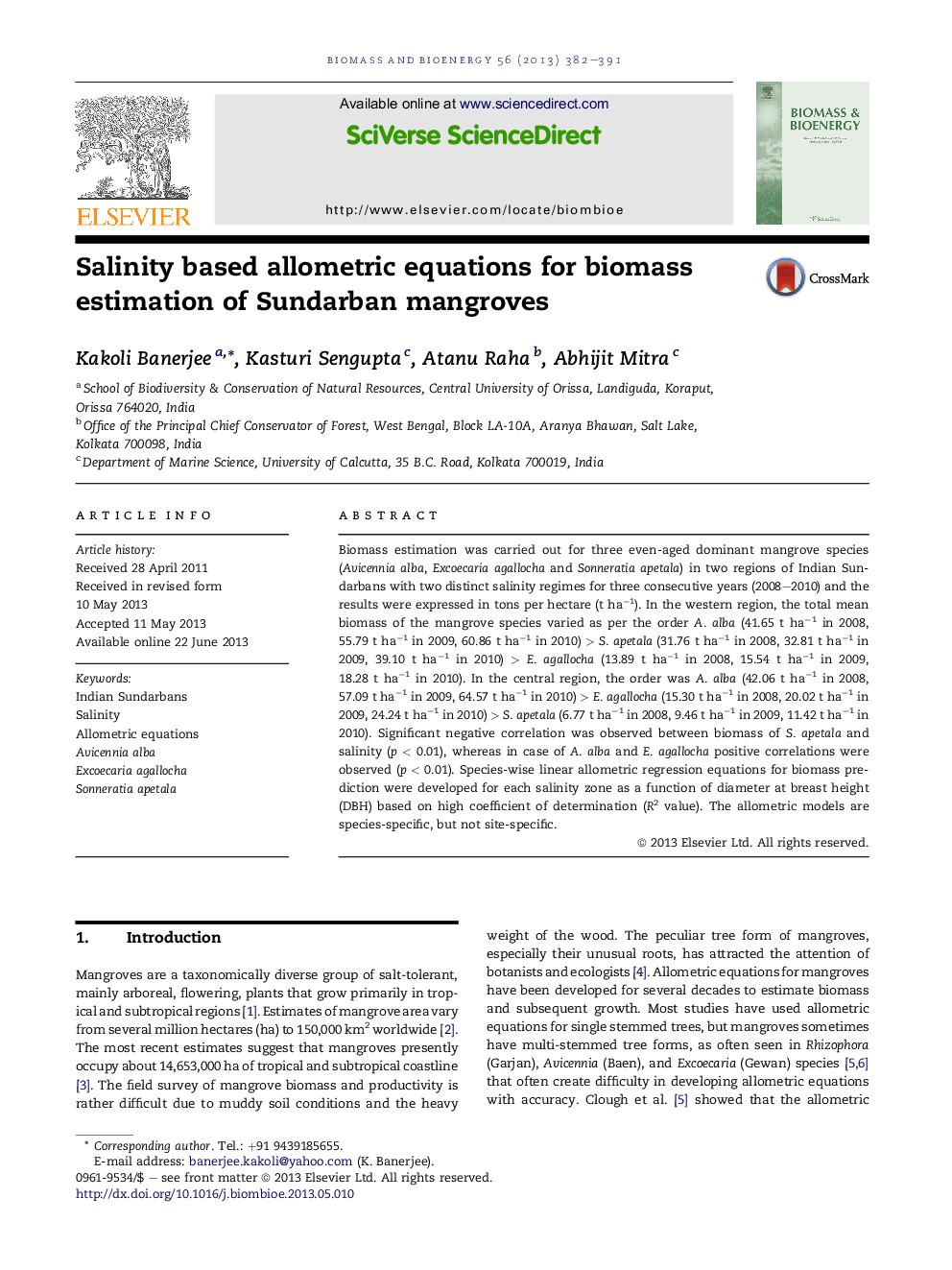| Article ID | Journal | Published Year | Pages | File Type |
|---|---|---|---|---|
| 7065193 | Biomass and Bioenergy | 2013 | 10 Pages |
Abstract
Biomass estimation was carried out for three even-aged dominant mangrove species (Avicennia alba, Excoecaria agallocha and Sonneratia apetala) in two regions of Indian Sundarbans with two distinct salinity regimes for three consecutive years (2008-2010) and the results were expressed in tons per hectare (t haâ1). In the western region, the total mean biomass of the mangrove species varied as per the order A. alba (41.65 t haâ1 in 2008, 55.79 t haâ1 in 2009, 60.86 t haâ1 in 2010) > S. apetala (31.76 t haâ1 in 2008, 32.81 t haâ1 in 2009, 39.10 t haâ1 in 2010) > E. agallocha (13.89 t haâ1 in 2008, 15.54 t haâ1 in 2009, 18.28 t haâ1 in 2010). In the central region, the order was A. alba (42.06 t haâ1 in 2008, 57.09 t haâ1 in 2009, 64.57 t haâ1 in 2010) > E. agallocha (15.30 t haâ1 in 2008, 20.02 t haâ1 in 2009, 24.24 t haâ1 in 2010) > S. apetala (6.77 t haâ1 in 2008, 9.46 t haâ1 in 2009, 11.42 t haâ1 in 2010). Significant negative correlation was observed between biomass of S. apetala and salinity (p < 0.01), whereas in case of A. alba and E. agallocha positive correlations were observed (p < 0.01). Species-wise linear allometric regression equations for biomass prediction were developed for each salinity zone as a function of diameter at breast height (DBH) based on high coefficient of determination (R2 value). The allometric models are species-specific, but not site-specific.
Related Topics
Physical Sciences and Engineering
Chemical Engineering
Process Chemistry and Technology
Authors
Kakoli Banerjee, Kasturi Sengupta, Atanu Raha, Abhijit Mitra,
